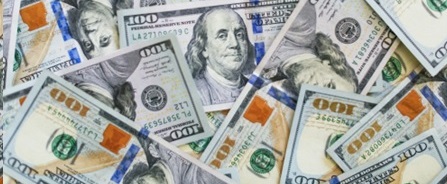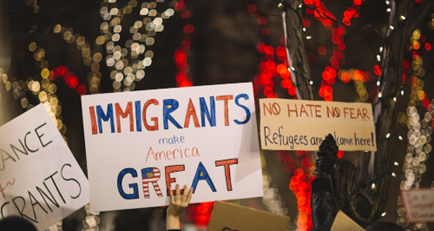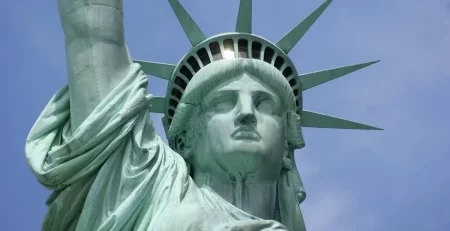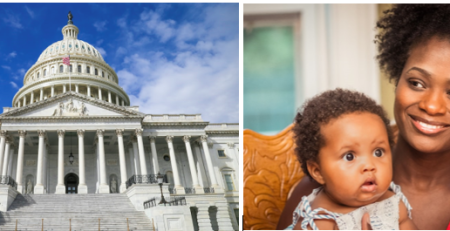Caribbean History is Black History
Many years ago, when I took a cruise to Jamaica, I overslept and missed my paid-for excursion. So, I got off the ship and walked around the port. There were taxi drivers lined up to take people places, and I said to one, “show me around the island. The *real* island.” So, we drove along back roads, I saw a school with lots of children in uniforms, I saw small houses, I saw a beach with a conch stand that was more common to the citizens of the island. I felt like I had a small taste.
But I am struck by the reality that I know virtually nothing about the Caribbean countries, many of whom are part of North America. Thirteen countries and only half of them I can name, dependencies that I can’t keep track of, 700 islands in total. I’ve heard of the big ones, the touristy ones: Bahamas, Barbados, Dominican Republic, Jamaica, St. Lucia, Trinidad and Tobago. And of course Cuba – aligned with Russia and Haiti – the French-speaking country with the horrific poverty. These are all self-governing countries, even though they have European ties.
And then there are the dependencies. I know about the US Virgin Islands, which I cannot name individually and Puerto Rico, the US commonwealth that wants to be a state. I know that the UK has dependencies – its own Virgin Islands, Anguilla, the Caymans, Montserrat. I have longed to go to Martinique to try my French and France has three other dependencies. What I didn’t know is that the Netherlands has dependencies as well, mainly places I’ve never heard off, like Bonaire, Saba, Sint Maarten. And the one I’ve heard of – Aruba.
Now, what I really didn’t know is how ethnically diverse the Caribbean islands are. I knew that that the Caribbean is part of the African diaspora, when Africans were brought as slaves in the 1400-1800’s. Some of them came with Muslim faith and Islam is practiced widely in Trinidad. There are still some indigenous people, the Taino and Kalinago. And of course, former white colonizers as well as expatriates and recent immigrants. But what I didn’t know about was the sizeable populations of Asian Caribbeans. Indo-Caribbeans were brought over from India as indentured servants for the French, English and Dutch in the 1800’s and have spread all over the Caribbean. Hindu is actually a wide-spread religion. The Sino-Caribbeans, former Chinese slaves from the mid-1800’s who now number over 200,000 people, live in Cuba, Dominican Republic, Haiti, Jamaica, Puerto Rico and Trinidad. And a handful of Japanese Caribbeans live in Cuba, the Dominican Republic and Jamaica.
The details of the history of the Caribbean Islands are not taught in American public schools. Perhaps because of the numerous European countries that exploited them. Starting with Columbus in 1492, the islands were populated with the Taino people, who were wiped out by the Spanish exploiters and the diseases that they brought. Slave trading began after the decimation of the indigenous people, and Africans were brought in the 1600’s. Around this time, the Dutch West Indies Company found salt deposits and decided to claim the islands of Curacao, Bonaire, Sint Maarten and Sint Eustatius and Saba. Meanwhile, Great Britain took Saint Kitts, Barbados, Jamaica, Nevis, Antigua and Montserat. France took Guadeloupe, Martinique and Hispaniola.
Slavery in the Caribbean Islands was unmatched in its exploitation and abuse of African slaves. The Caribbean Islands had considerably more slaves than the US. There were approximately 11 million slaves brought to the Americas, and only 500,000 went to the US. Slaves in the Caribbean Islands worked the sugar cane, cotton and tobacco plantations, working long hours in the excessive heat, and were poorly clothed and housed. The mortality rate was high, with many slaves dying from overwork, malnutrition, and disease.
The Caribbean islands played a major role in the Revolutionary War from 1775-1783. The French and Dutch supplied money, artillery and gunpowder to the American colonies from islands such as French Sainte-Domingue and Martinique, and Dutch St. Eustatius. Over 2000 American ship owners interfered with the British sugar trade, diverting the British forces from the war with the American colonies so that they could protect their interests in the Caribbean.
It was because of the Revolutionary War that Afro-Caribbeans began to challenge their European colonizers. The first such challenge was the Haitian Revolution which began in 1791 with the efforts of Toussaint L’Ouverture, the revolutionary who helped overthrow the French. Haiti became an independent republic in 1804. However, as part of the “deal”, Haiti had to pay back the white slave owners for their loss of slaves, a burden which crippled the country until 1947. Haiti’s poverty is infamous, as is much of their political turmoil. In 1821, several Central American countries which bordered the Caribbean – El Salvador, Costa Rica, Guatemala, and Honduras, won freedom from Spain. An uprising in Jamaica in 1831 lead to the abolition of slavery on all of the British colonies, decades before the American Civil War. The other half of the island of “Hispaniola”, the Dominican Republic, declared independence in 1844. The next island to establish itself as a free republic was Santo Domingo which became Cuba in 1898. A wave of Caribbean colonies seeking independence came after WWII, but it was years before they were successful. Trinidad-and-Tobago, Jamaica, and Barbados in the 1960’s and the Bahamas, Grenada, Dominica, Saint Lucia, Saint Vincent, Antiqua, and Barbuda, and St. Kitts and Nevis in the 1970’s and 80’s. All in told, 13 islands became independent.
But so many have chosen to stay under European domination. Why aren’t these islands independent? There are a few reasons. Relatively speaking, the islands are very small, often with less than 50,000 – a medium-sized town. They don’t have the means to afford a proper defense, or foreign relations, even though they have their own local governments. They are dependent on the tourism that comes from the countries they are associated with, often which is controlled by foreign corporations. And in general, the advantage of dependence outweighs the pride which may come from independence. In fact, Anguilla was to be part of St. Kitts-Nevis but revolted so that they could stay dependent on Great Britain.
I want to take a pivot and talk about the Caribbean emigrants and their descendants who have come to the US. Colin Powell, the son of Jamaican parents, often spoke about the advantages that Caribbean descendants have over African-Americans. The countries that they are from reflect histories of independence and racial majority. Their reality as immigrants and children of immigrants represents a level of drive and determination that comes from leaving one country and seeking a better life in another. Afro-Caribbeans who migrate to the US often have expectations of how they or their children will take advantage of the education and economic opportunities that the US has to offer, and their drive frequently overcomes the racism that they experience. As a result, the United States is richer because of the Afro-Caribbeans who migrated here. So many have made their mark on black history:
- Alexander Hamilton, first Secretary of the Treasury, was from Nevis.
- Marcus Garvey, leader in Black Nationalism and the Pan-African movement, was from Jamaica.
- Iconic, Oscar-winning actor Sidney Poitier grew up in the Bahamas.
- His friend, Calypso singer and activist Harry Belafonte came from Jamaica.
- 1960’s “Black Power” activist Stokely Carmichael/Kwame Ture came from Trinidad and Tobago.
- Arturo Alfonso Schomburg, whose collection of literature, art and black history became the basis of the Schomberg Center for Research in Black Culture came from Puerto Rico.
- Nobel Peace prize winner Maryse Condé is from Guadeloupe.
- Equalizer actress Lorraine Toussaint is from Trinidad and Tobago.
- Billionaire singer Rihanna is from Barbados.
Other famous Americans had Afro-Caribbean parents:
- Malcolm X’s mother was from Grenada,
- New York Representative and presidential candidate Shirley Chisholm’s parents were from Barbados and Guyana.
- Cicely Tysons’s parents were from St. Kitts and Nevis.
- Grandmaster Flash’s parents were from Barbados.
- Notorious B.I.G.’s parents were from Jamaica.
- Supreme Court Justice Sonia Sotomayor’s parents were from Puerto Rico.
- Comedian Amanda Seales’ mother is from Grenada.
- Actress Kerry Washington’s mother is Jamaican.
- Hamilton creator, Lin-Manuel Miranda’s parents were from Puerto Rico.
- Singer Nicki Minaj’s parents were from Trinidad and Tobago.
- Beyonce Knowles’s father is from the Bahamas.
- Former Attorney General Eric Holder’s father was from Barbados.
- And of course, Vice-President Kamala Harris’ father was from Jamaica.
It has been interesting to put together this blog, interesting to learn about the cultural diversity, the history, the politics. It may seem strange to lump together an area that is so rich with history and diversity. But the reality of colonization ties them all together. The slaughter of the indigenous people, the exploitation of Africans and Asians, the domination of Europeans, the need for tourism to fuel their economy, and of course the impact of Afro-Caribbeans in every aspect of American history. I could not begin to include all of the things I found, some of which I took out! But I encourage you to explore the Caribbean islands, especially if you plan to visit. Each one has its own history, its own culture, its own flavors. Don’t miss out.











Comments (3)
Very interesting points you have mentioned, thank you for posting.Expand blog
… [Trackback]
[…] Read More Information here on that Topic: afrobougieblues.com/caribbean-history-is-black-history/ […]
… [Trackback]
[…] Here you can find 2706 additional Information to that Topic: afrobougieblues.com/caribbean-history-is-black-history/ […]